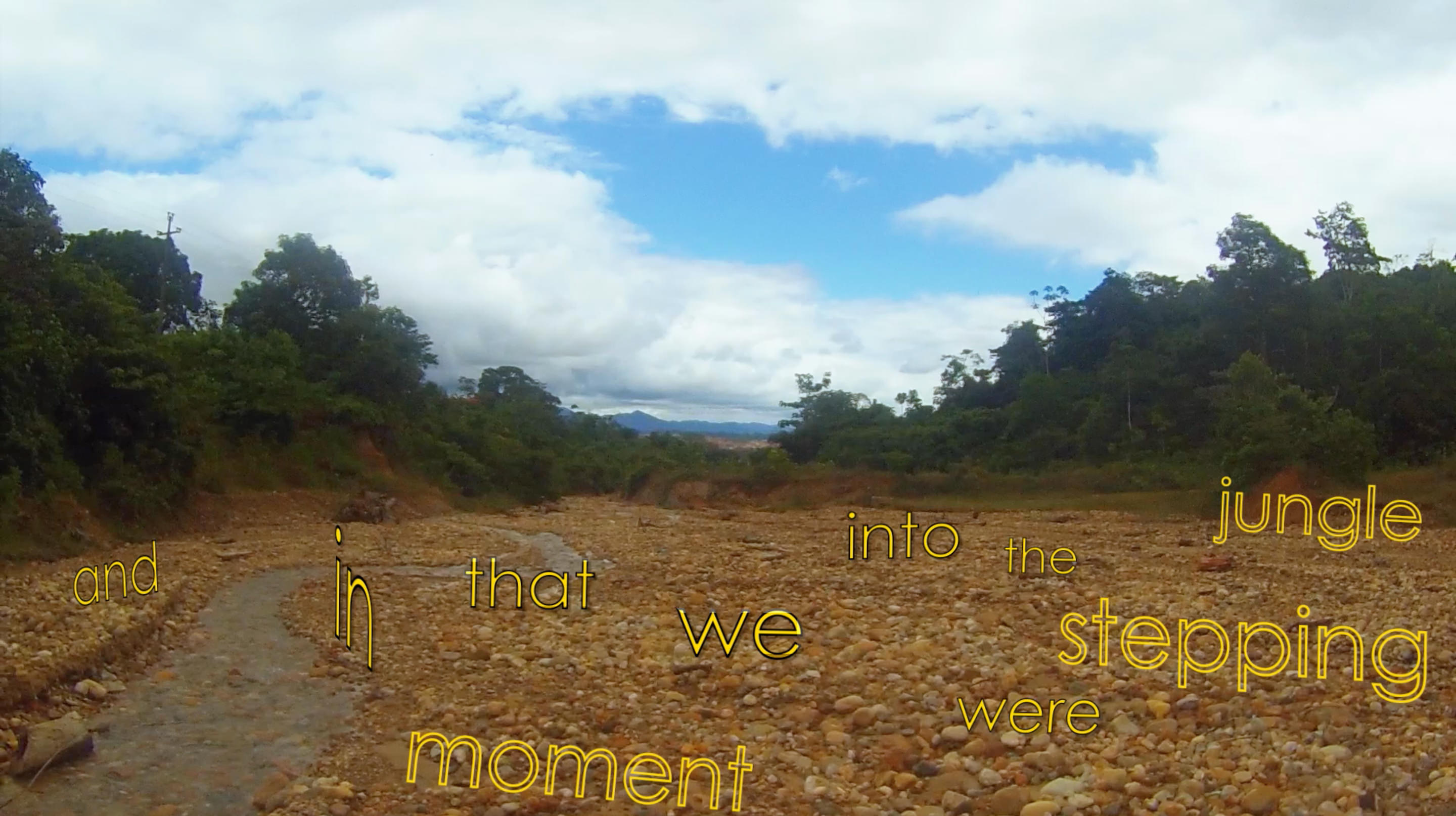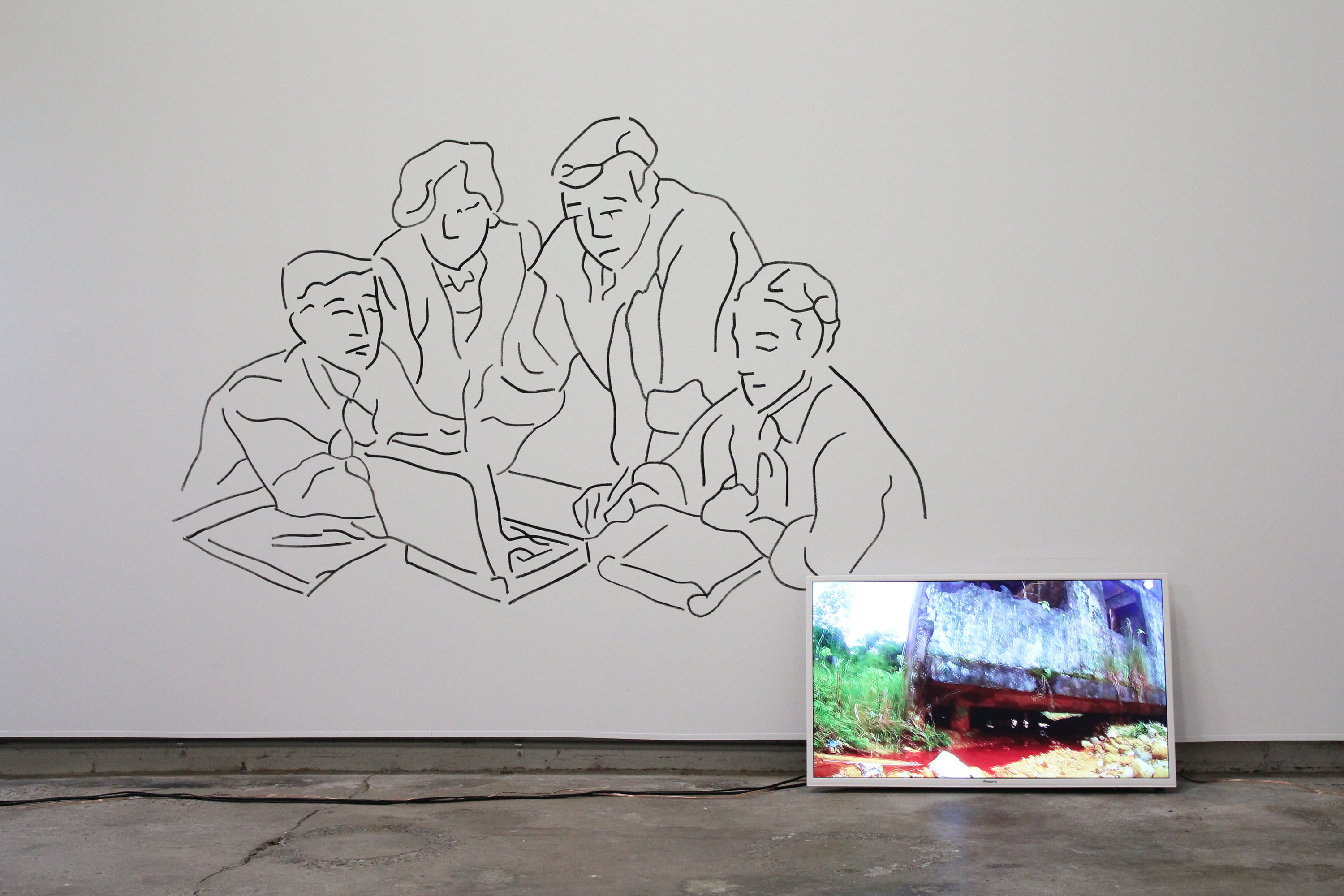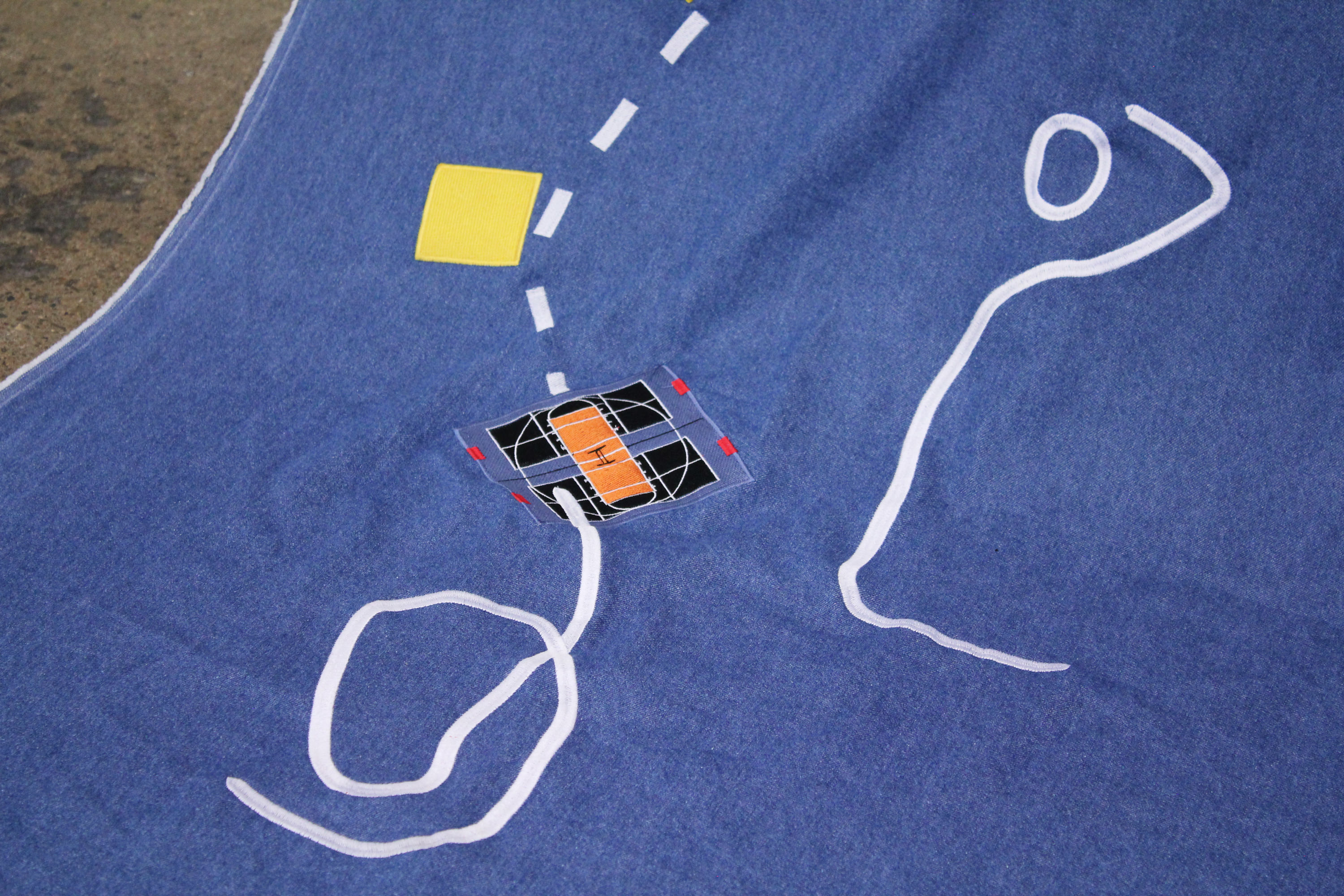Globalisation: upside/downside
Kathryn Kelly: Kiah Reading vs The World

The Greater Sunrise, Kiah Reading, The Walls, image courtesy the artist
“There is no place for the dysfunctional”—these words float across Kiah Reading’s lush new video work, The Greater Sunrise, part of his inaugural solo exhibition, Kiah Reading Vs The World at The Walls Art Space and in this year’s thrumming Bleach* Festival on the Gold Coast.
The Walls’ previous exhibition, Enter the Map, was curated by Danni Zuvela with local luminaries Carlotta, Libby Harward and Scott Redford exploding out of the gallery space to create wayfinding maps built from the artists’ First Nation and queer lives and experiences. These singular documents also functioned beautifully as practical maps. A highlight was Libby Harward’s work that oriented the gaze to Wollumbin (Mt Warning) and Jellurgal (Burleigh Headland) from a kayak paddling through Tallebudgera Creek.
Game Plan [In the Zone], featuring Kiah Reading, is the second iteration of a series commissioned by The Walls to explore the “collision of art and sport via themes of collaboration, competition, performance—and enhancement,” an apt juxtaposition for the forthcoming Commonwealth Games in 2018.

The Greater Sunrise & Communication III, Kiah Reading, installation photo courtesy The Walls
Reading graduated from Griffith University QCA in 2014 and is part of a generation of globalised Australian artists currently working across the world, with collaborations and exhibitions in Peru, Paris, Belgium and Turkey. His playful text work reminds me of some of Sebastian Moody’s early text pieces: understated beauty but also kind of cool, with the distillation of specific emotions and landscapes into iconoclastic phrases that linger in your mind. The dreamlike fluidity of the video comes from a GoPro camera largely positioned on the back of a moving motorbike, with the lengthening shadows of the two riders delicately impinging on the screen at the corner of your eye.
This potential travelogue is deconstructed with witty and provocative text art (“capital out of mind”) that drops in and across the rolling landscape (“and at that moment we slipped into the jungle”) from oblique angles and with a clumsy font that emphasises the nostalgic intrusion of ideas (“family out of lust”) onto a deserted utopia. In its use of language and video the work integrates the key elements of Reading’s practice and also speaks to his manifesto “to utilise physical object-and experience-making…motivated by a strong will to open the discussion of our personal idiosyncrasies as political beings and our current contemporary desire for the economisation of non-economic phenomena (desire, language, creativity and communication).”
The remainder of the exhibition shifts into more traditional mediums, including Communication, Communication I, Communication II, a series of stylised sketches of individual figures (male and female) and groups in conversation, hand-drawn in black chalk across the white walls of the small gallery space. The iconography of the form of these sketches most resembles 80s neon signs: the women with full lips and wearing power suits, the men with blank faces and rectangular stripes to denote their hair. All of the tableaux have that cartoonish presence despite their scale. It is only the fragility of the hand-drawn lines that softens the suggestion of commercial motifs with the delicacy of the artist’s hand, visible when you look at them closely.

El Bordado, Kiah Reading, The Walls, installation photo courtesy The Walls
Dominating the central area of the small gallery of The Walls is a dramatic embroidered cloth, El Bordado, designed by Reading and sewn in Gamarra in Lima, Peru, the largest textile district in South America. The floor-length blue cloth has perky, embroidered basketball motifs including balls, hoops and the segmented outlines of courts, as well as small flourishes and white bows. The cloth is draped and sits somewhat incongruously with the sketches on the wall and the video installation in the corner of the gallery. Thematic connections between the works are clear, from a critique of globalisation’s commercial imperatives, its impact on landscape and the hollowing of art to the sport and performance curatorial impulse of Game Plan. However, there is also a feeling of temporariness in the space which is a little disquieting. Surveying Reading’s previous work, the wit leaps out: bananas carved into dolphins peeping out of cocktail glasses, frenzied performance videos like Be Your Own Boss that cut together footage from corporate videos. This exhibition seems both more sombre and more tenuous, the work of a talented artist in transition.
Kiah Reading’s Be Your Own Boss will be newly exhibited at Metro Arts Galley, Brisbane, 6-23 September. For more about the artist, including a video of the lecture performance, visit his website. Reading’s Pure Reason and Bass, for Liquid Architecture in 2016, can be seen on Vimeo.
Game Plan [In the Zone]: Kiah Reading, Kiah Reading Vs the World, The Walls Art Space and Bleach* Festival, Gold Coast, 1-15 April
RealTime issue #138 April-May 2017






